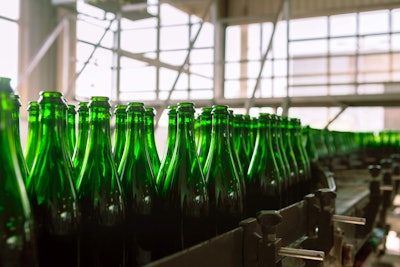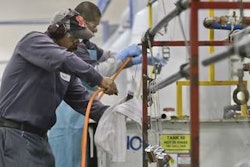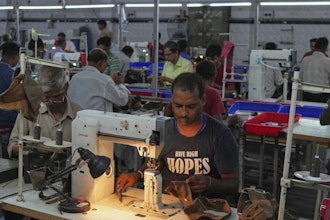
This article originally appeared in the October print issue of IMPO Magazine. To view the digital version, click here.
Modern manufacturing faces many challenges from changes in technology to new regulations and everything in between. One of the most prominent challenges for manufacturers is being environmentally conscious.
Because of the political nature the discussion often takes, manufacturers are left to make a decision between “going green” to allegedly save the environment, or continuing current operations because process changes can be costly.
Here are some factors to consider: How much waste is generated in your plant operations? What is done with the waste? What is the level of carbon emission that results from operations? How much energy is used to uphold operations, and what is the energy source?
The truth is, there are both benefits and drawbacks to becoming more eco-friendly in practice. Though these vary between different companies, here are some pros and cons to consider when facing the decision of whether or not to be more eco-friendly.
Saving Money With Sustainability
The most prominent point supporting sustainable manufacturing is undoubtedly the overall effect it has on the environment. There is increasing concern and conversation over climate change, and one way environmentalists hope to combat this growing issue is by encouraging manufacturers to implement changes and reduce their carbon footprint.
Beyond the state of the environment, some of these changes can directly benefit the manufacturers themselves.
Shel Horowitz, a green business profitability consultant and author, said the public is currently in a shift where, given a choice between a green business and a non-green business, with all other factors being nearly equal, people will most likely choose the green option. He says this is true in both business-to-business and business-to-consumer operations.
“There’s a huge marketing benefit to be had, and eventually there will be a marketing cost of not going green,” he says.
In a society with changing perceptions on climate change, having a good “green” reputation can help a business.
This positive reputation-building of a company is one of several reasons the Environmental Protection Agency cites sustainable practices as beneficial to a manufacturer.
According to the EPA’s website, sustainable manufacturing can also lower business costs and reduce waste, improve sales and brand recognition, provide greater access to financing and capital and assist in employee hiring and retention.
Sheena DeBellis, the director of quality and sustainability at Follow Your Heart – a company working to become carbon neutral – suggests that employees have a lot of pride in the overall mission of being sustainable at the company.
Follow Your Heart is an organic food company based in Canoga Park, California, that focuses on dairy-free, soy-free and vegan products. They produce a variety of branded vegan products, such as Vegenaise – an entirely plant-based mayonnaise – in a solar-powered manufacturing facility. Being environmentally-friendly is a prominent and important goal for the company.
“Employee education is not costly, but can lead to many positive changes,” she says. “Helping employees understand the importance of their impact on their environment will improve cooperation with sustainability initiatives and promote employee action.”
There may be initial costs to implement changes, but many sustainable manufacturers and green experts claim there is a greater benefit than that initial cost.
Tatsuya Nakagawa, VP marketing at Castagra Products, Inc. – a sustainable industrial coatings company – says the green movement has progressed to a point where there are several options for manufacturers to go green and reduce the cost while remaining competitive. In other words, going green and continuing to make a profit are not mutually exclusive. It just depends on finding the “right fit” based on each individual company.
“There needs to be a change in thinking to know that sustainability can line up very well with economic benefits,” Nakagawa says.
A key point to remember is that, oftentimes, using green equipment means using less energy, and using less energy lowers overall operating costs.
Change Can Be Costly
Despite all these benefits, it’s no surprise that the cost to invest in eco-friendly changes still causes major concerns for some manufacturers.
“I’d say the short-term drive for immediate profit versus long-term financial stability is a problem of our modern age,” Horowitz says.
Whether that cost is in new material or equipment, changing the handling of waste or employee training and education, it can certainly add up — especially for larger manufacturers.
“Many companies see making eco-friendly choices as expensive, but in many areas being more green can actually save money. Figuring out where those areas are, however, takes time, and many companies – ours included – have limited personnel resources to research and implement those eco-friendly changes,” DeBellis says.
Furthermore, although there are several choices a manufacturer can decide on when it comes to sustainability, finding the right choice for that specific company can prove to be challenging. There is no one solution that can satisfy all companies, and some can make changes that may work great for them, but might not be so great for others.
Making the Decision
To sum it all up, it ultimately comes down to the personal decision of each manufacturer and business as to whether or not they will become more eco-friendly and how they plan to accomplish that goal. It can save money in the long run, improve the company’s reputation and contribute to a cleaner planet, but it will also likely cost money up front, require some effort and resources and could create some big changes in specific industries. It’s a matter of finding the right balance and weighing these pros and cons to come to the fi nal decision.
With the growing trend in eco-friendly business and environmental legislation, chances are likely that at least some changes will need to be implemented sooner than later. In any case, it is a good idea to think ahead and plan accordingly for potential alternative methods of operation to be more green and sustainable — even if it’s just in the small ways.
“The important thing to note is that there are solutions,” Horowitz says. “In every industry there are better ways of doing it that are cheaper and greener at the same time and often more profit-making.”
Keeping The Energy Sector Alive
There is great concern within specific industries, especially coal and oil companies, about the effect going green could have on operations and jobs.
The EPA is cracking down on carbon emissions and air pollution to reduce harmful greenhouse gas emissions; however, this can make it difficult for these industries to function.
Horowitz explains that it is a matter of perception and flexibility when it comes to this issue in particular.
“You’re not really in the coal or the oil business; you’re in the energy business,” he says. He explains that there is currently a great system of transportation set up for current electricity, but the question now becomes: how can they use this in a greener way?
“There will be a shakeout. Not everybody will make it. A lot of people will be too tied to the old models. But ultimately, fossil fuels and nuclear are not a sensible way to generate power at this point in our economy and in our ecology,” Horowitz says.























